Silver pastes for solar contacts?
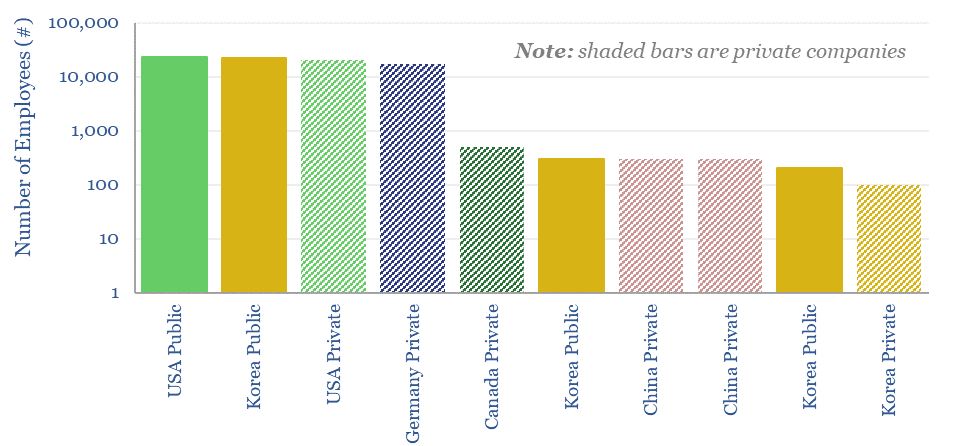
…increasingly also the back too (in TOPCon and HJT cells), forming the electrical contacts with the underlying silicon substrate. Can any companies have an edge? We reviewed 15 patents from…

…increasingly also the back too (in TOPCon and HJT cells), forming the electrical contacts with the underlying silicon substrate. Can any companies have an edge? We reviewed 15 patents from…
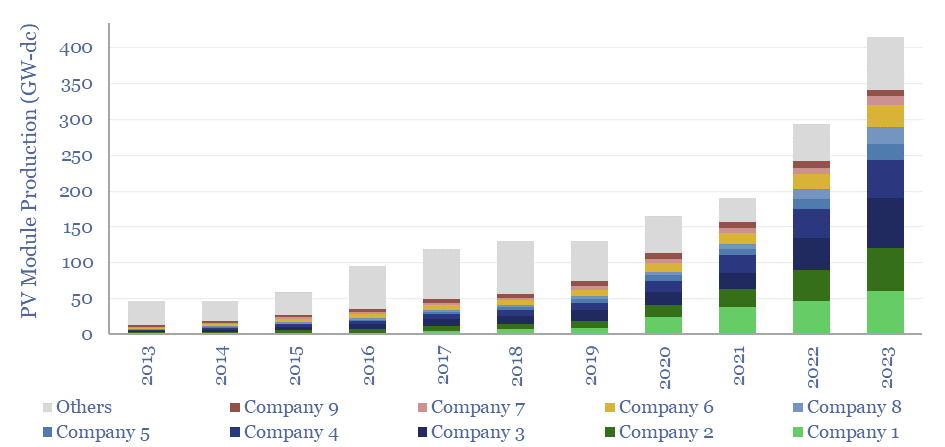
…comparing the companies by solar module selling prices ($/kW), margins (%), efficiency (%), transparency, and technology development. $599.00 – Purchase Checkout Added to cart Solar modules are produced when photovoltaic silicon (model…
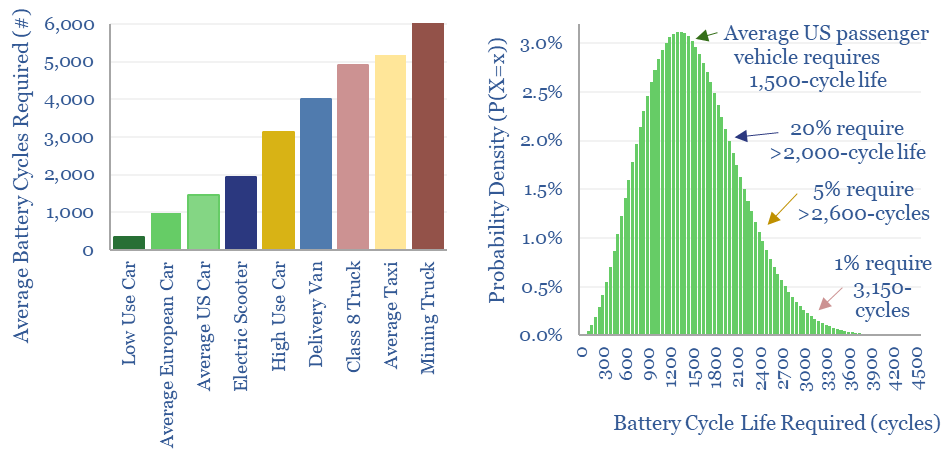
…switch away from incumbent lithium ion battery chemistries, to more novel and more energy dense battery chemistries (see below) such as solid state batteries, silicon anode batteries or sodium-ion batteries….
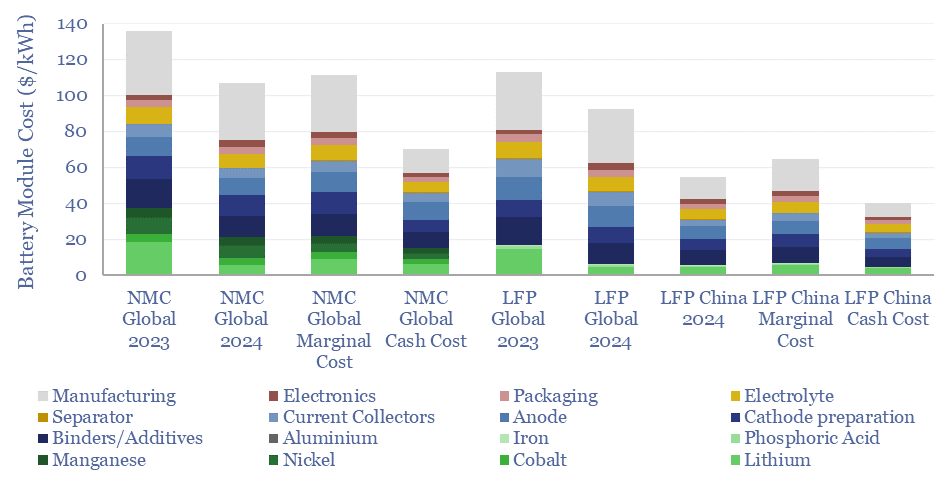
…the West, while cash manufacturing costs are c60-75% lower again, which is relevant amidst China’s history of overbuilding capacity in other value chains such as solar and PV silicon. We…
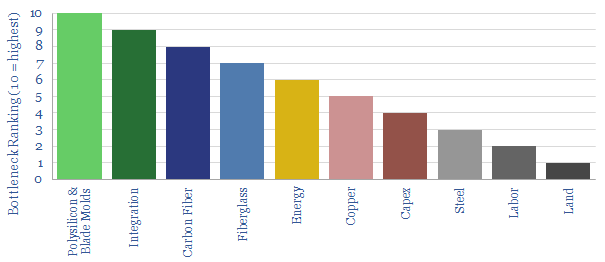
…our assessment (page 3). Materials are more challenging, and we map out the total demand pull on global steel, copper, silicon, fiberglass and carbon fiber; and we also discuss the…
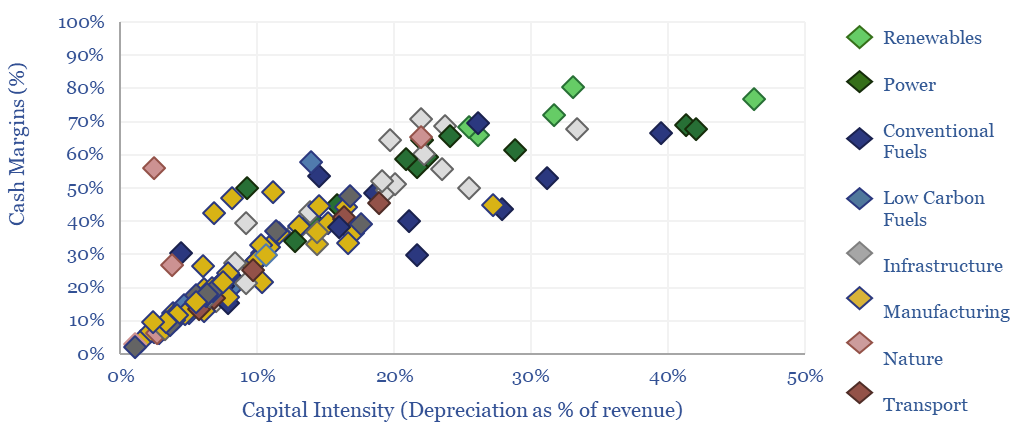
…Ammonia, Carbon Fiber, Cement, Copper, Cyanides, Desalination, Glass, H2O2, Hydrogen, Industrial Gases, Lithium Batteries, Methanol, NaOH/Cl2, Nitric Acid, Paper, Plastics, Silicon, Silver, Steel, Wood Products. As a rule of thumb,…
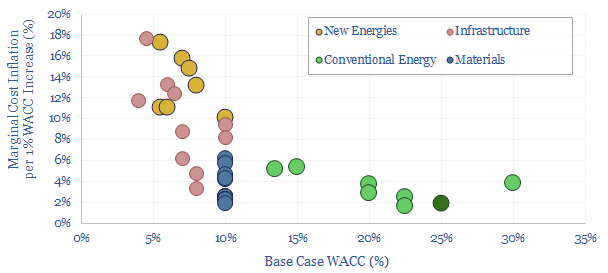
…more materials becomes harder. Unfortunately solar panels do not grow on trees. Building more solar requires building more PV silicon, or silver, or copper production facilities. These are also capital…

…will scale up. But the trajectory will not be a straight line. We have recently seen share prices crushed in offshore wind (forewarned here) or PV silicon (forewarned here). Active…
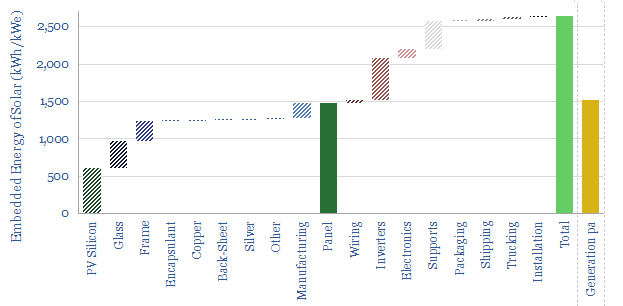
…solar panel is about 65% glass, 15% aluminium, c10% polymers (mainly EVA encapsulants and PVF back-sheet), c3% copper. Photovoltaic silicon is only 5% of the panel by mass, but about…
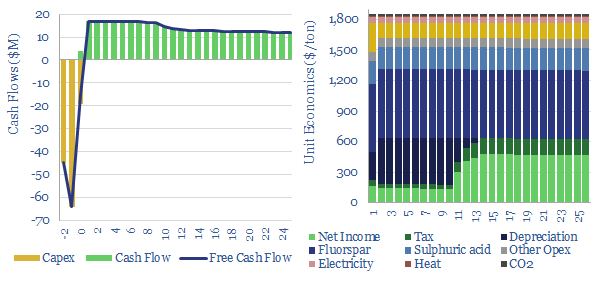
…in its own right, to etch silicon chips, metals and blow insulation foams. This economic model captures the production of hydrogen fluoride from acid-grade fluorspar and sulfuric acid. We think…